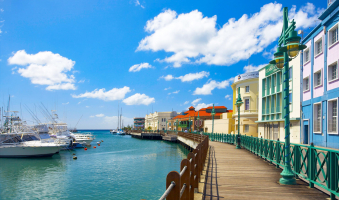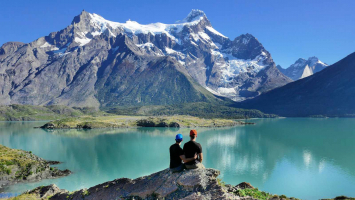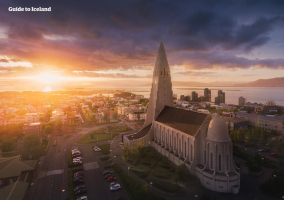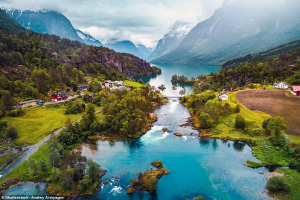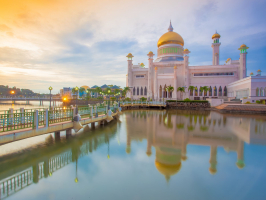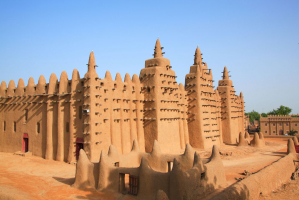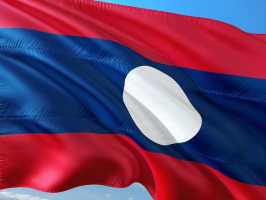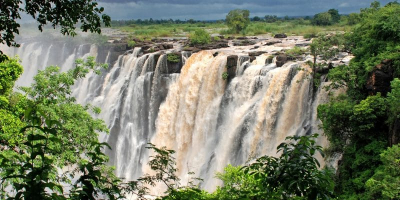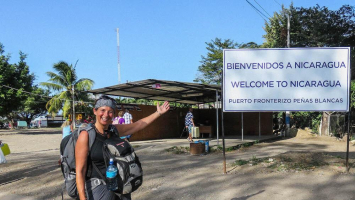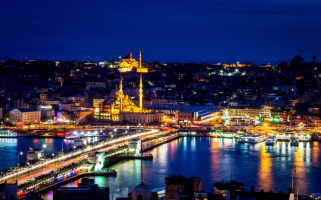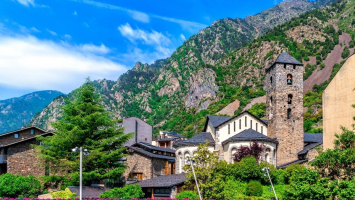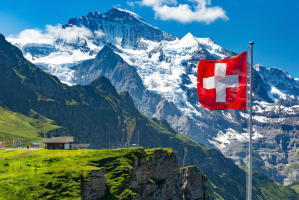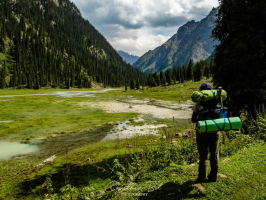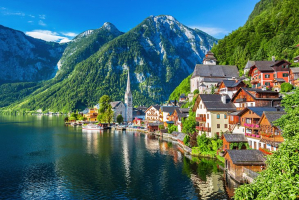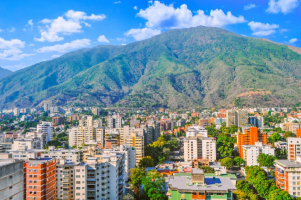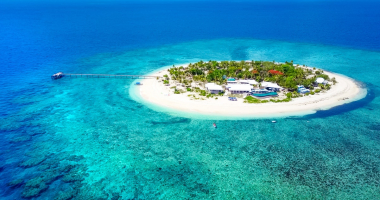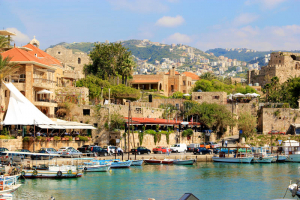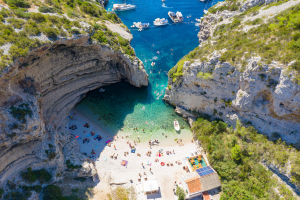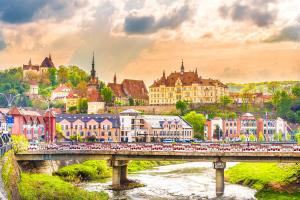Top 12 Things About Bolivia You Should Know
Bolivia may be a difficult nation to navigate at times. Buses run on their own timetable, the temperature is harsh, bureaucracy abounds, and few people ... read more...understand English. These hurdles, however, may be surmounted with a little planning and an optimistic mindset. Furthermore, any roadblocks will pale in contrast to the wonderful experiences this lovely nation has to offer. Here are some Things About Bolivia You Should Know before traveling.
-
Weather is one of the Things About Bolivia You Should Know. It becomes chilly. Many of Bolivia's most famous tourist destinations are located at high elevations, which means it might get chilly, so dress warmly. Only the most opulent hotels have heating, but there are lots of warm alpaca caps and sweaters for sale to keep you warm. It also becomes heated. Bolivia's geography is diverse, so don't expect it to be chilly everywhere. There are a lot of scorching lowland places were wearing that stylish alpaca sweater will be uncomfortable.
Upon landing in Bolivia's altiplano, many people get altitude sickness (highland plains). Avoiding alcohol, eating small meals, rising gently, avoiding heavy activity, and drinking coca tea are all strategies to reduce the symptoms. Expect to be wet if you travel during the rainy season, which runs from November to March. It might be anything from a short rain in the afternoon to a complete soaking that lasts for days. Always have a poncho or umbrella on hand, and be extra cautious when trekking in the woods.
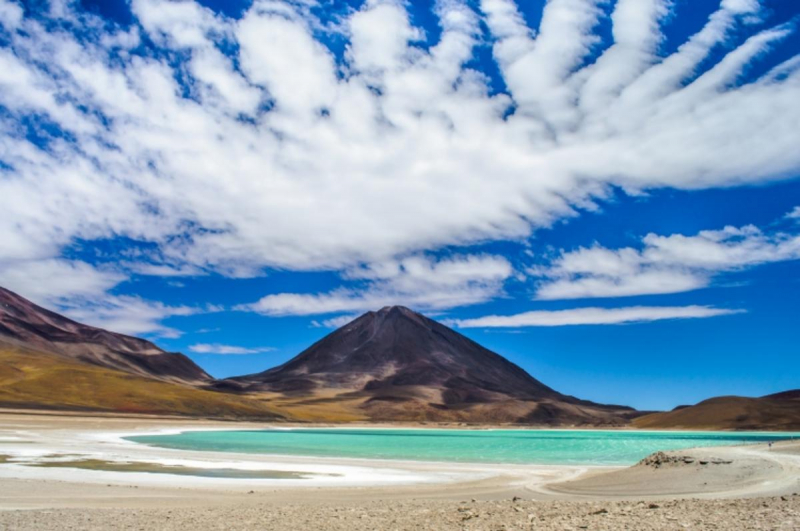
iexplore.com 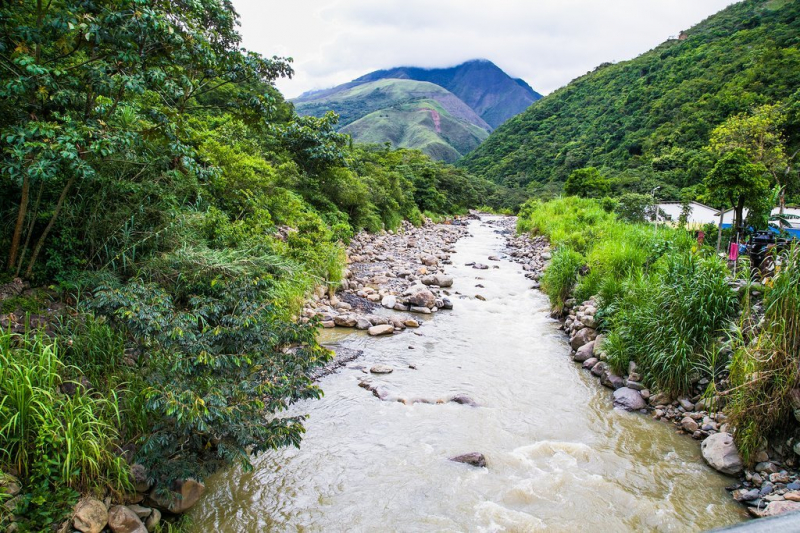
iexplore.com -
Bolivian buses can be difficult to navigate at times. That is one of the Things About Bolivia You Should Know. As outside temperatures dip below freezing, on board restrooms are closed, delays are prevalent, the heater is broken, and at least one passenger constantly has their window open. Bring warm clothing for overnight journeys across the altiplano, and don't drink too much water because the next rest break might be hours away. Few locations on the planet offer adventures as epic as Bolivia's, which crams a continent's worth of geography — towering mountains, upland plateaus, and lowland rainforests – into a very tiny space.
To go from one area to another, buses must frequently travel up or down – sometimes thousands of meters at a time – over twisting routes. It's the most popular means of transportation in Bolivia, and it's a thrilling experience. However, it is not appropriate for everyone, and there are alternatives. For the faint of heart, planes, trains, and even aerial cable vehicles may make things easier. Here's how to navigate Bolivia.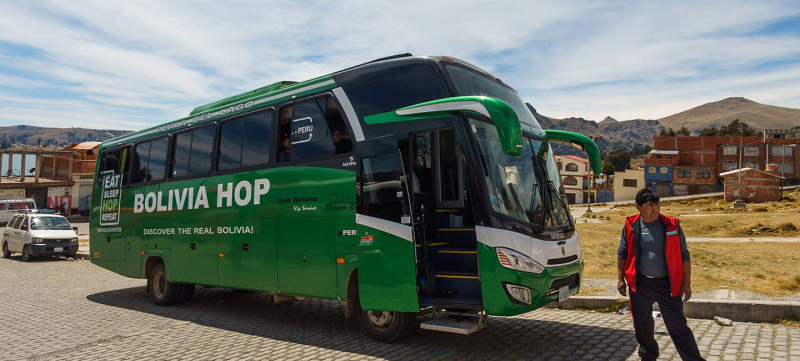
boliviahop.com 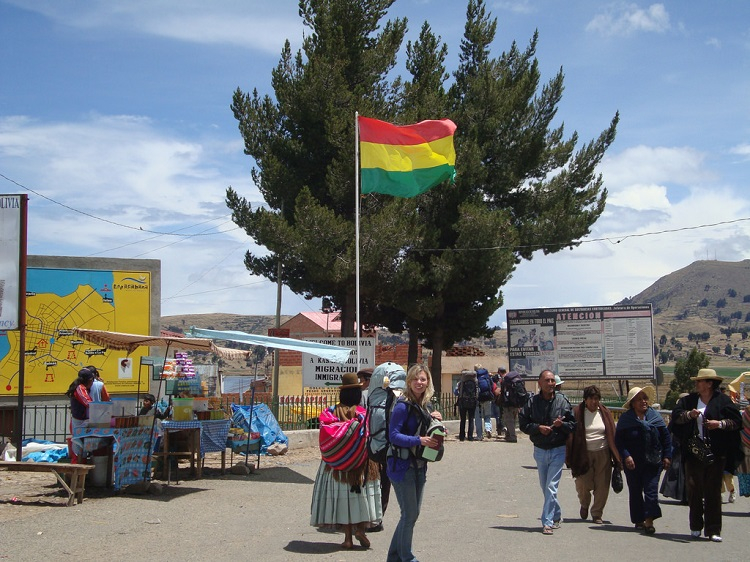
boliviahop.com -
At most, the Bolivian attitude toward timeliness may be classified as casual, which is one of the Things About Bolivia You Should Know. It's fairly common for things to be late, whether it's buses, excursions, meetings, or social gatherings (especially social occasions). There are also things to contend with, such as poor road conditions, strikes, and blockades. Take it all in stride and remember that in Bolivia, patience is a virtue. Strikes and demonstrations are regular, and bad weather can cause bus traffic to come to a halt. Allow for a couple of days of flexibility in your trip arrangements in case things don't go as planned.
Bolivia is a relatively safe place to visit, despite its numerous perils. You should be informed that the majority of thefts and pickpocketing occur in tourist destinations, restaurants, stores, and public transit, and that violent crime occurs on the streets as well.
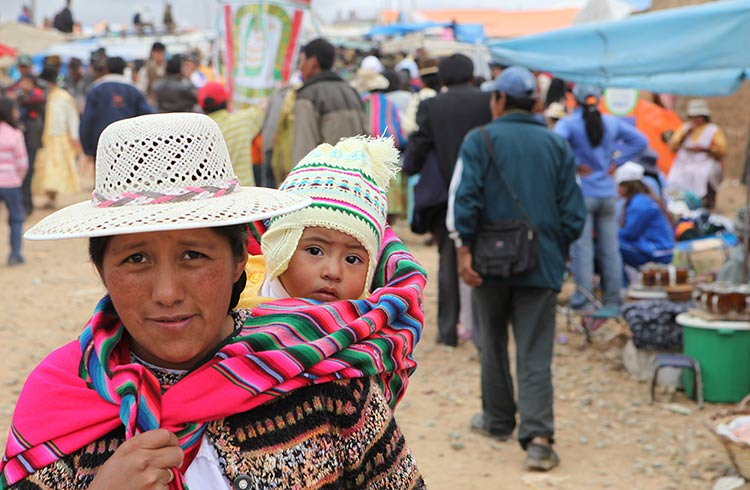
mining.com 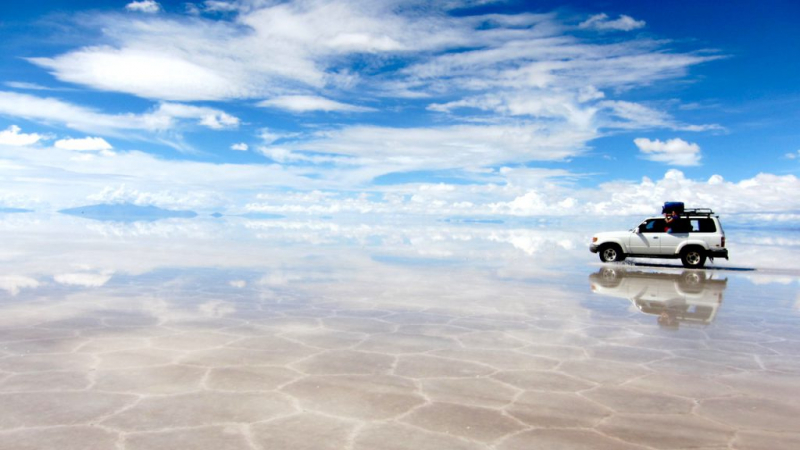
mining.com -
One out of every three children is malnourished because the food they eat is deficient in key nutrients. That is one of the Things About Bolivia You Should Know. Riberalta, in the Department of Beni, is no exception. Despite the fact that most families in this largely indigenous community have moved to Riberalta in search of better opportunities, they are poor and lack nutrition expertise. Food hygiene procedures in Bolivia are poorer than in the developed world due to a lack of legislation, supervision, and education. Those with sensitive stomachs should seek out restaurants that prepare their meals fresh on the premises and have a high customer turnover.
By concentrating on hygiene, restaurants may provide a great visitor experience and acquire loyal customers. Although kitchens and toilets are critical, tidy entryways and eating spaces are also essential. Work with a qualified partner to establish a thorough food safety program that guides, trains, and advises personnel to ensure they follow the proper practices. Employees will know what to clean, how to clean, and when to clean with adequate training, preparing them for food safety and hygiene concerns.
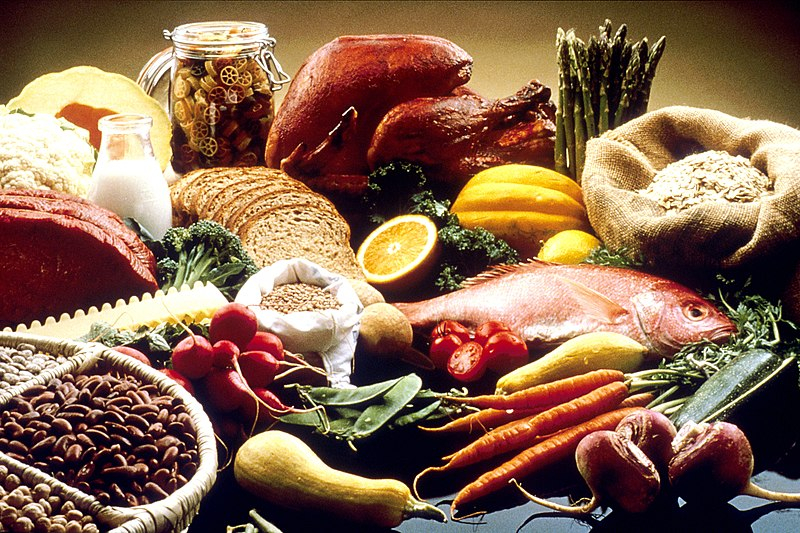
en.wikipedia.org 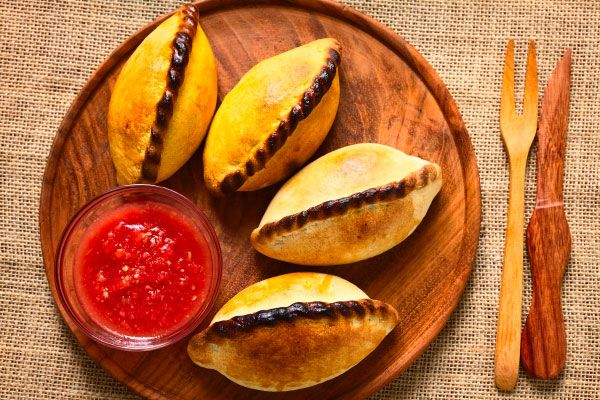
en.wikipedia.org -
To enter Bolivia, American citizens must have a visa, which can be obtained upon arrival. A return itinerary, hotel arrangements, passport-size pictures, a letter of invitation, evidence of yellow fever vaccination, proof of adequate finances (credit card or bank statement), and US $160 in cash are all required by the government. In actuality, immigration officers normally only collect your money and a snapshot of your passport before waving you through.
The Bolivian government enacted Supreme Decree 4460 on February 2, 2021, reinstating the necessity for U.S. residents visiting Bolivia to get a tourist visa. All U.S. citizens visiting Bolivia will need to get a tourist visa starting February 8, 2021. Bolivian tourist visas are available for purchase at any land or air border. Furthermore, a tourist visa can be obtained at a Bolivian consulate in the United States or another adjacent country. The permit is valid for 30 days. Citizens of the United States who seek to prolong their stay can do so through the Administración Nacional de Migración (National Migration Service), which has offices in nearly every major city. Please see the section below for details on visa requirements.
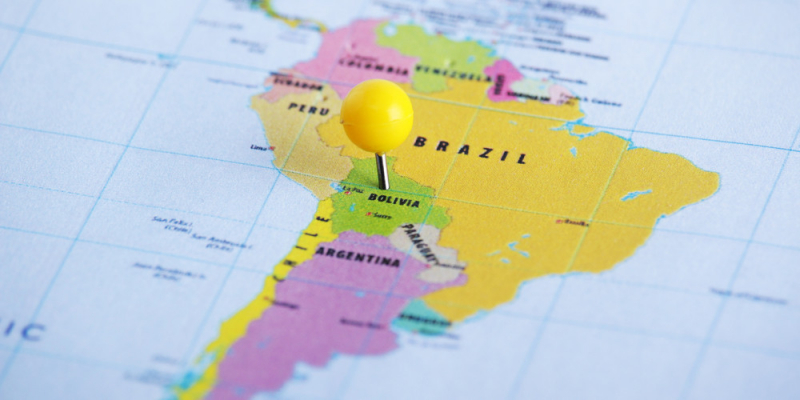
pickvisa.com 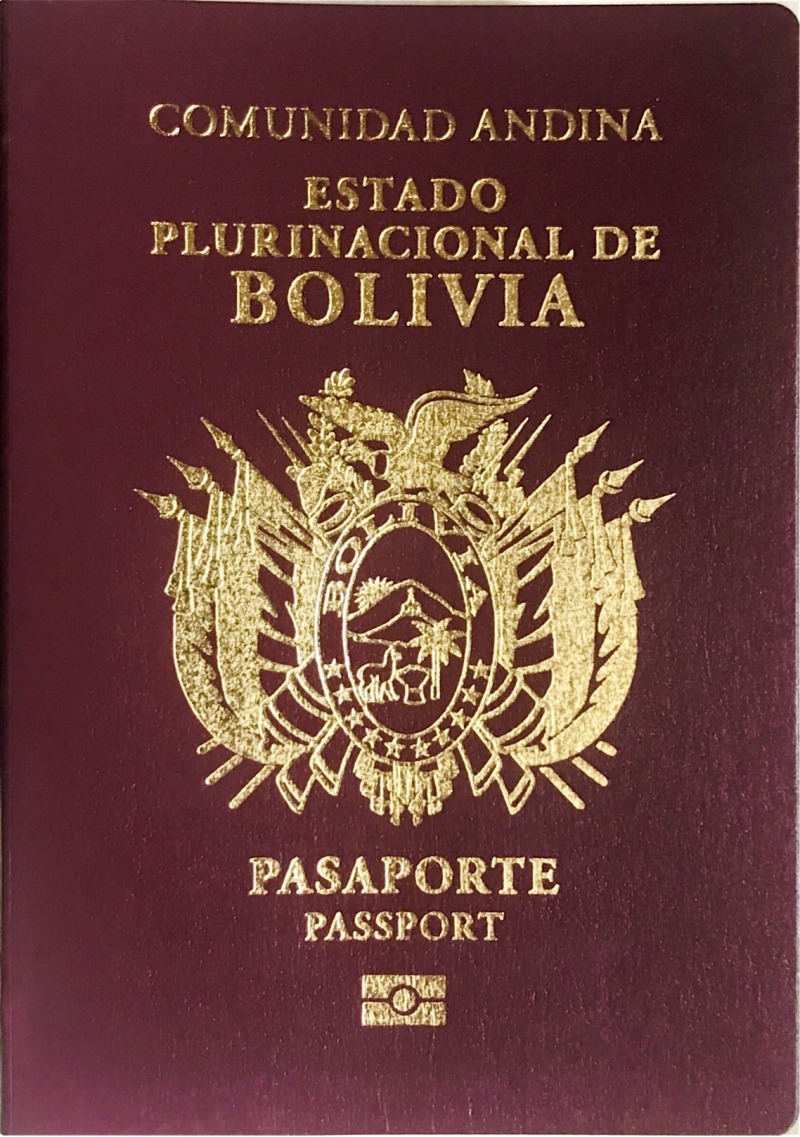
pickvisa.com -
Bolivian sports fans can keep up with the latest news by visiting our Bolivia news and current events page, which is constantly updated. The following is for people searching for a description or list of Bolivian sports, or just some amusing facts about Bolivian sports and how sports impact Bolivian customs and culture.
First and foremost, soccer is by far the most popular sport in Bolivia. In Bolivia, no other sport can compare to soccer, or futbol, as it is known in Spanish. It is mostly played by men and boys, although women and girls are gradually becoming more involved. Bolivia is still a chauvinist country, and when it comes to girls or women playing soccer, men do not take them seriously, seldom play against them in teams, and do not feel they are as athletic or capable as men. Female athletes, on the other hand, are gradually breaking down the restrictions.
Tennis, racquetball, swimming, horseback riding, golf, gymnastics, racing (like in automobiles), skiing (although our glaciers are melting), mountain climbing, hiking, running and jogging, track and field, rollerblading, volleyball, and more sports are available in Bolivia. Motorcycle races, cycling races, and mountain biking are also popular. Waterskiing and waverunners are also popular in some regions, although they are not widely used since most people cannot afford them. Also, many individuals, especially tourists, do rappelling and rock climbing in locations with hills and mountains. Whitewater rafting is a popular activity in tropical locations with numerous rivers. Canopy excursions are available in several rainforests.
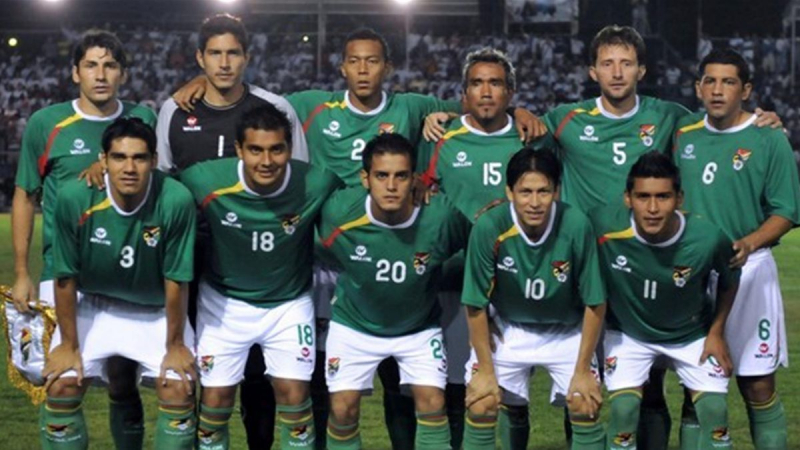
eurosport.com 
eurosport.com -
Cash is king in Bolivia. Only the swankiest hotels and restaurants accept credit cards, so get used to using ATMs. These are widely available in all decently sized communities, but in isolated places they are unreliable (if they exist at all). In case of need, keep some additional cash and a debit card separate in your luggage. Bolivians can use Bolivian credit cards or PayPal to make purchases in other countries. Foreign credit card holders can use their cards to make purchases in Bolivia, according to their home bank's rules. Bolivian businesses are unable to charge overseas customers using PayPal or other online payment methods.
A bank in the importer's nation operates on behalf of an exporter to collect and remit money for a cargo through documented collection. The exporter provides the shipping and collection paperwork to his or her bank (in his or her home nation), which forwards them to the importer's correspondent bank. In exchange for cash payment (in the event of "documents against payment" instructions) or a firm commitment to pay on a defined date, the foreign bank (referred to as the presenting bank) turns over shipping and title papers (needed for taking possession of the shipment) to the importer (in case of "documents against acceptance" instructions).

investopedia.com 
investopedia.com -
The majority of people in the tourist business can communicate in English, while practically everyone else can't. Learn a few basic Spanish words and acquire as much information from the hotel receptionist as possible. The language barrier should not be too difficult to overcome with a little patience and good humor.
Bolivia's constitution of 2009 declared Spanish and 36 indigenous languages to be official languages. Previously, the country's official languages were merely Spanish, Aymara, and Quechua. Many Indians speak or comprehend Spanish, especially in cities, market towns, and new colonies.The number of Roman Catholics has gradually dropped, although they still make up more than three-quarters of the population. Bolivia's ecclesiastical hierarchy is led by a primate cardinalship based in Sucre. Since the 1940s, the Roman Catholic Church has expanded its role from virtually entirely ceremonial to include social services, the news media, and education. Various Protestant faiths (particularly Evangelical churches) saw increased membership in the late twentieth century, as did the numbers of Bahs and Mormons. Bolivia has a small Jewish population.
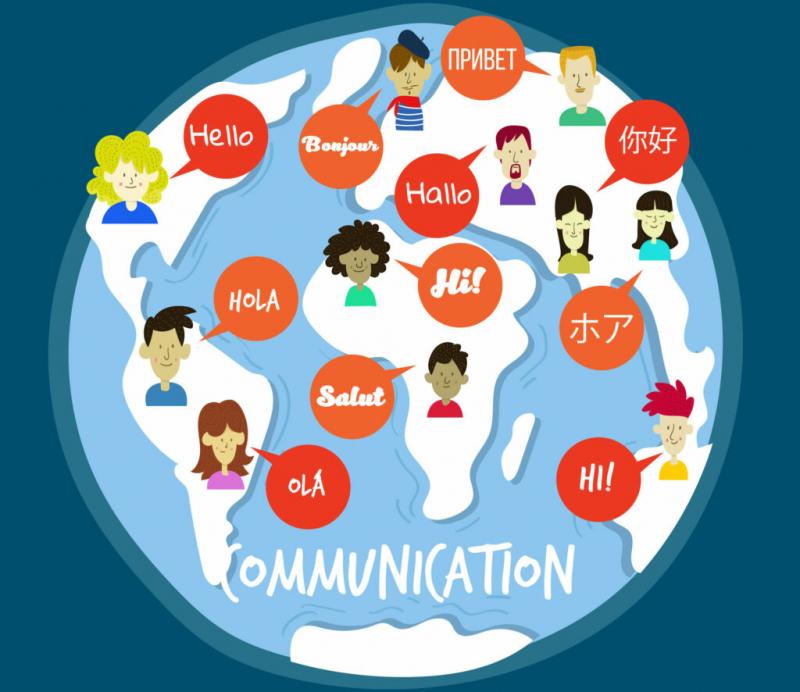
gurmentor.com 
gurmentor.com -
For those who are used to seeing clearly displayed prices in stores and markets, bargaining (negotiating or haggling over the cost of an item) can be a frightening experience. In fact, for someone who has never bargained before, it might be really nerve-wracking. Take a deep breath and read the following ideas and examples before you become too afraid that you'll never get the hang of it. Learning to bargain prices in Bolivia may be a fun experience. There's no need to be hesitant about it because it's a regular habit here, even expected of consumers. However, everything has its time and place, and price negotiating is no exception.
When you don't know the vendor's language, shopping and bargaining are significantly more challenging, but even if you do, mistakes happen, and you simply have to laugh about them and remember them as a wonderful memory of your vacation or Bolivian living experience. We understand how it feels to be unfamiliar with a new country's shopping habits, so we've compiled the following guidelines on how, when, and where to bargain (or not negotiate) prices while shopping in Bolivia.
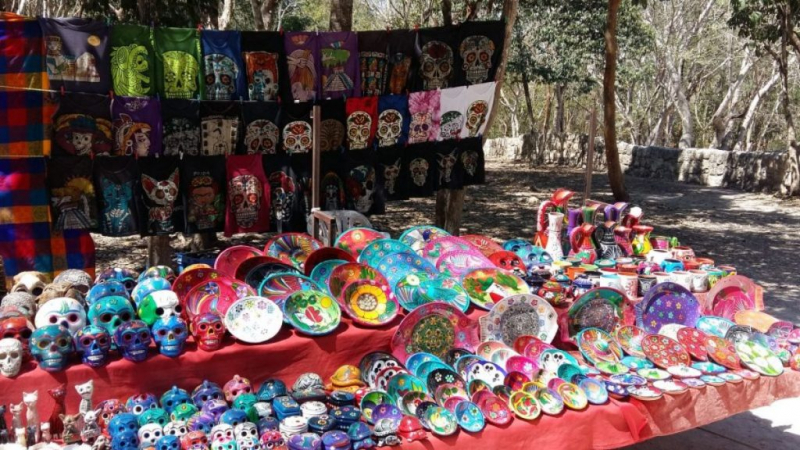
intrepidtravel.com 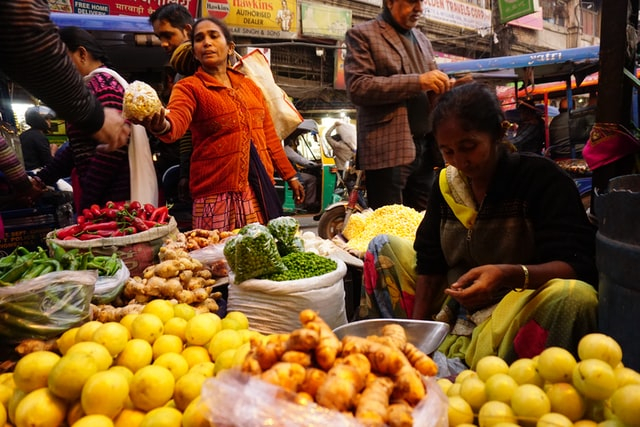
intrepidtravel.com -
Anywhere there is a need for outdoor equipment, it may be rented for a low price. Because quality might vary, double-check everything. Only those who plan on doing a lot of camping should consider carrying their own gear, aside from hiking boots and clothes.
When you initially arrive in Bolivia, you will most likely fly into one of the international airports in Sucre, La Paz, or maybe even Santa Cruz de la Sierra. You'll be able to locate professional guides or tour companies operating out of these cities if you want to go camping with a professional guide or tour company (which is recommended for the more "wild" regions). It's better if you plan this ahead of time before you travel to Bolivia. If you will not have access to a vehicle while in the country, it is recommended that you go camping with a tour.
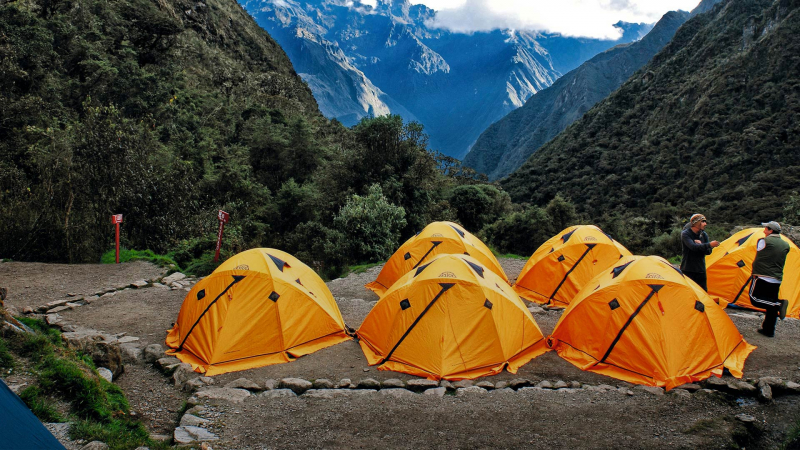
peru.travel 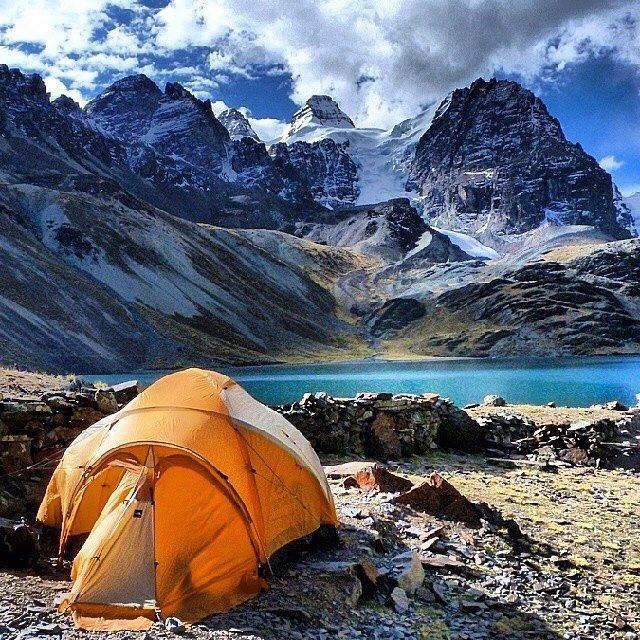
peru.travel -
Bolivia is a country rich in traditional festivities that should be experienced by all visitors. The Alasitas Fair, or Feria de Alasitas, takes place in La Paz, Bolivia, one week before Carnival, on January 24th. Bolivians from all across the nation purchase small objects to give to Ekeko, the Aymaran God of Abundance, in the hopes that he will bring them good fortune and money. Bolivians acquire a figurine of Ekeko to keep in their homes throughout the year in order to have their desires answered. After that, they purchase all of the goods they desire in small form, get them blessed by a shaman, and pin them to Ekeko's poncho, praying for it. The Alasitas Fair is a fantastic way for visitors to get a taste of the local culture while also enjoying the vibrant celebrations. However, bear in mind that La Paz may get quite congested during this season, so booking accommodations ahead of time is advisable.
Easter, or Semana Santa in Spanish, is celebrated by Catholics across the continent, including Bolivia, with processions similar to those seen elsewhere in the Andes. Food, music, dancing, parades, and religious rites are all part of the vibrant celebrations. On Holy Thursday, when the city's churches open their doors to a torrent of devotees who gather to light torches, pray, and sing catholic hymns, the celebrations reach their height. This also allows visitors to visit the city's various churches without having to pay the customary admission costs.
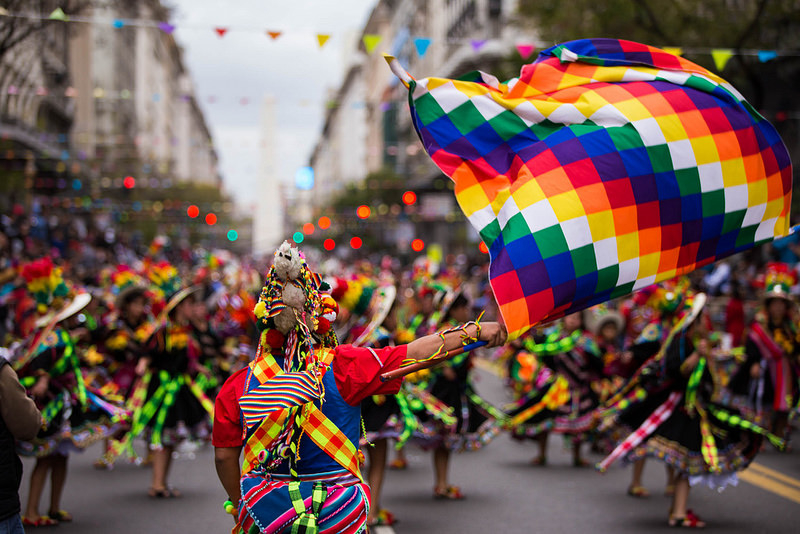
whereinourworld.weebly.com 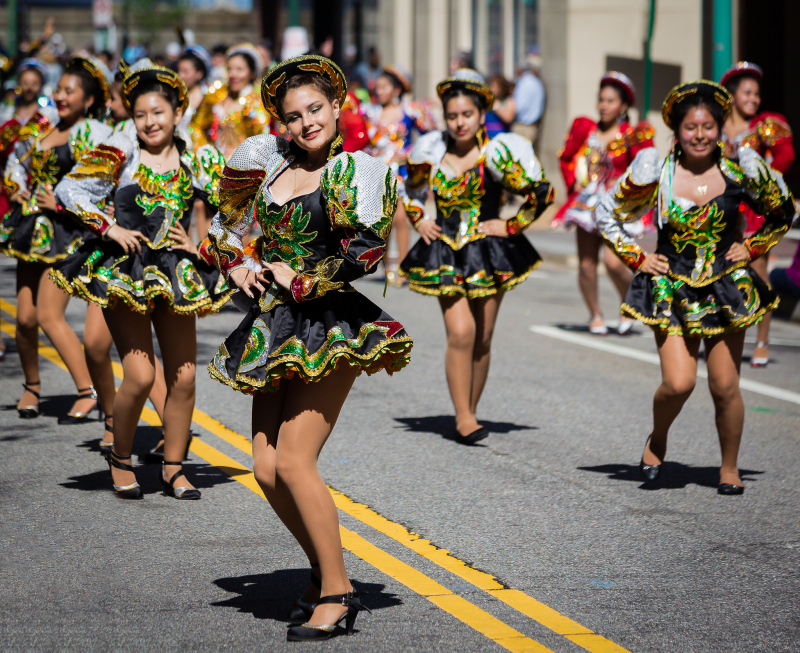
whereinourworld.weebly.com -
Bolivian cuisine evolved from a fusion of Spanish cuisine and indigenous ingredients, as well as Aymara customs, with subsequent influences from Germans, Italians, French, and Arabs as a result of immigration from those nations. Corn, potatoes, quinoa, and beans. These components have been mixed with a variety of Spanish staples, such as rice, wheat, and meat, such as beef, hog, and chicken.
Pique Macho is a colossal platter of beef, sausage, boiled eggs, French fries or potatoes, onions, and red and green peppers. The ingredients differ from one city to the next, as well as from one restaurant to the next, but one thing remains constant. After ordering this entrée, you will not be hungry. Most quantities will feed at least two people (making this a wonderful dish to order if you're traveling Bolivia on a budget).
Chicharrón de Cerdo is a pork dish that is comparable to this. It is said to have originated in Cochabamba, where cooks create it in front of customers on weekends. The beef is cooked in a combination of its own fat and chicha for a long period (an alcoholic drink made of corn). It's also made with corn and potatoes, but it doesn't come with a fiery sauce like Fritanga. If you see Chicharrón de Cerdo on one of those menus with images, it may not appear to be the most appetizing food, but it is absolutely worth ordering for its flavor.
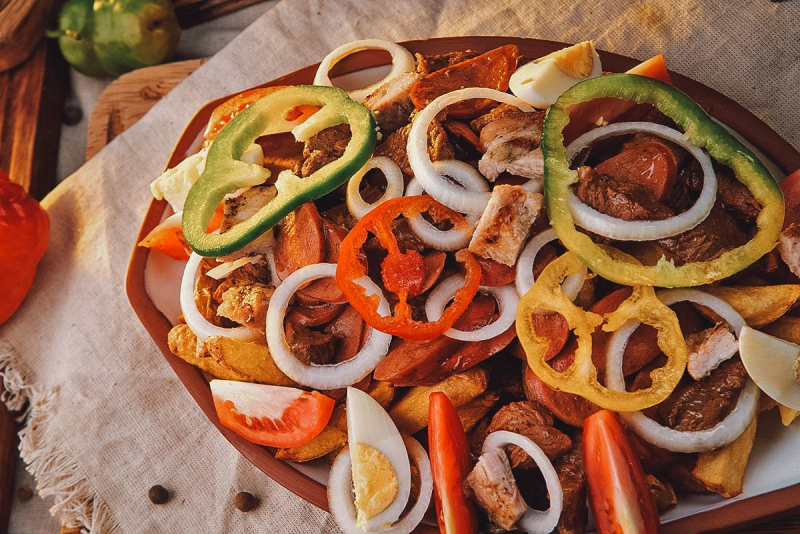
willflyforfood.net 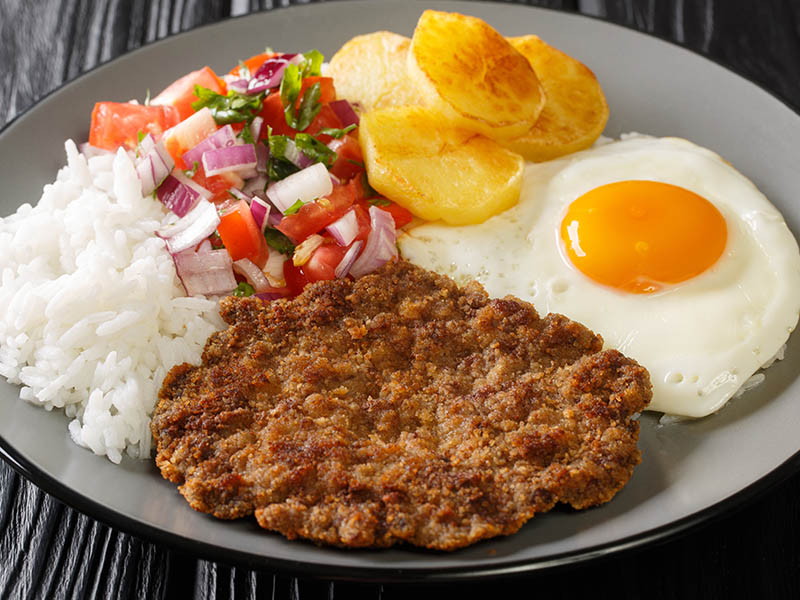
willflyforfood.net














